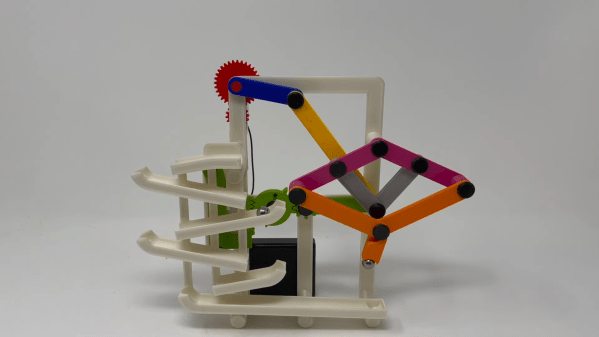Model trains are fun, but sometimes little whirring motors in electric models feel a long way from the hulking metal beasts of the real railways. [Lewis] of [DIY Machines] adds back some of the flavor with this little steam train build, smoke effects included!
The body of the train itself is 3D printed in PLA. It’s designed to O-gauge scale, and comes complete with models for 3D printed track as well. The parts are given a coat of paint to better approximate the finish of the real thing; sometimes bare plastic just won’t suffice, after all.
Propulsion is thanks to an onboard battery and a simple gearmotor, driven by a HG7881 motor driver. An ESP32-CAM is responsible for running the show, allowing the train to be commanded wirelessly. As a bonus, the camera is mounted in the very front of the train, allowing one to watch a livestream of its progress about the tracks. Meanwhile, the smoke effect is thanks to a small water atomizer fitted in the train’s chimney, which makes the train look that little bit more authentic.
The combination of a self-powered train and 3D-printed tracks is a compelling one. [Lewis] has been able to leave his PETG 3D-printed track outside for over two years and it’s still in working order. That’s not something easy to achieve when using metal rails to deliver power.
Overall, this is a fun way to get into building your own model trains, and is a lot more hands-on than simply buying pre-built models from a store. From there, the sky is really the limit for your creativity! Video after the break.
Continue reading “3D Print Yourself A Tiny Steam Train Complete With Smoke Effects”



















